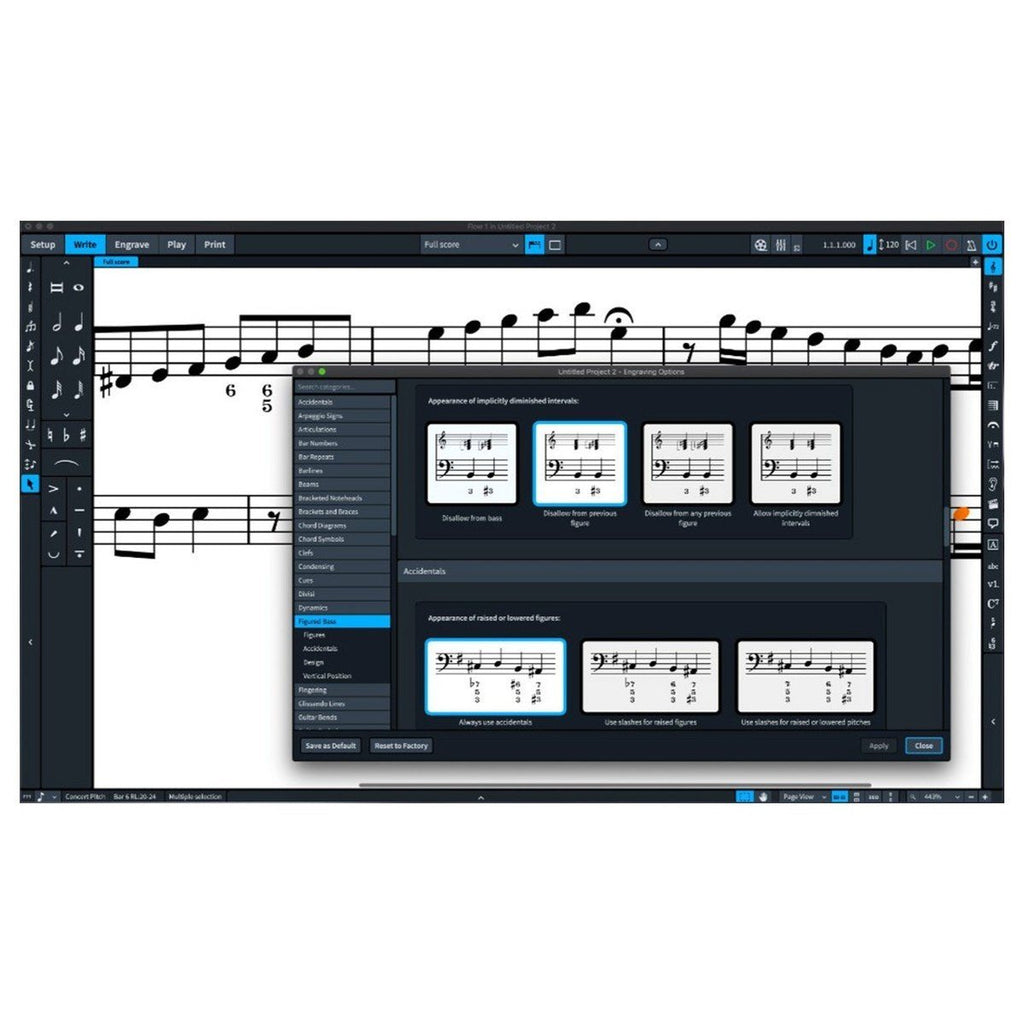


Here, the Layer 2 rest and notes display in red: For this example, hide the rest in Layer 2 in the first half of the bar. In the score, enter the notes for both the part and the score as Layers. The technique involves creating *both* octaves of the notation in the measure using Layer 1 and Layer 2, then filtering the display differently in the score and parts using Staff Styles.įirst, let’s make sure we have all the notes we need for display. However, in the score, we want to display the music like this: Let’s say we have a passage that we want to display like this in the part: One advantage of Alternate Notations is that they can be applied to partial bars.īasically, in order to create the proper visual presentation for a Partial bar, we are going to add all of the notes we need in both octaves in different Layers in Finale, then use a Staff Style to only display the notation as we want it shown. There is a way to do this, using the Alternate Notation section of Staff Styles.
#Dorico 8va how to
In my recent post “ Displaying Different Octaves In Score and Parts in Finale”, I described how to use Finale Staff Styles to display full bars of notation in the at their actual written pitches with ledger lines, while displaying the notes in the score an octave lower (in the staff) with an 8va line.īut what if you need to display a few notes within a measure in different octaves in a part, while leaving it as written in the score? The Transpose feature of Staff Styles must be applied to a full measure it can’t be applied to a partial measure. Occasionally, it is necessary for significantly different notation to represent identical passages between the score and parts. In the Part, enter the Speedy Edit frame, select the pitch you want to change, and type 9 on the keypad to change the pitch to its enharmonic equivalent without changing it in the score. The same pitches are enharmonically spelled differently in the part to allow the part to be read more easily. Enharmonic pitches in the part is another.įinale has a great Enharmonic feature which allows you to create an enharmonic unison for specific notes. A transposing part is a good example of this. Sometimes, however, it is necessary for the score and parts to show the same notation in different ways. Typically, a score and its parts show identical information.


 0 kommentar(er)
0 kommentar(er)
